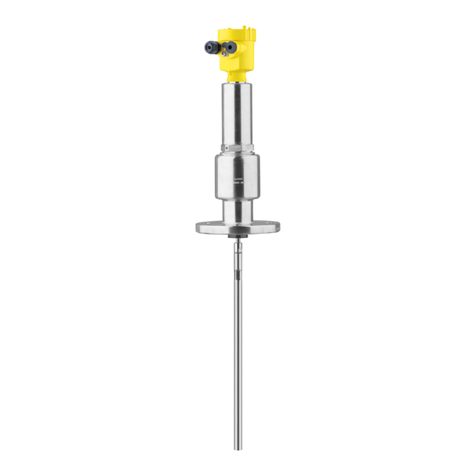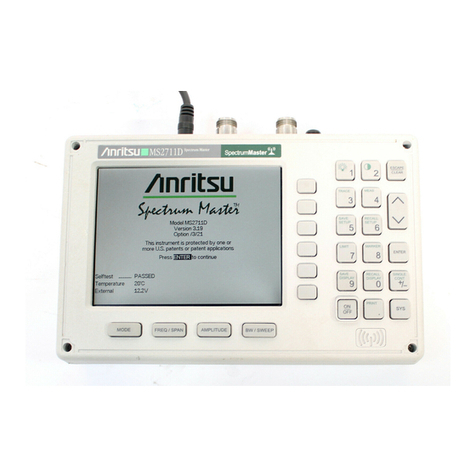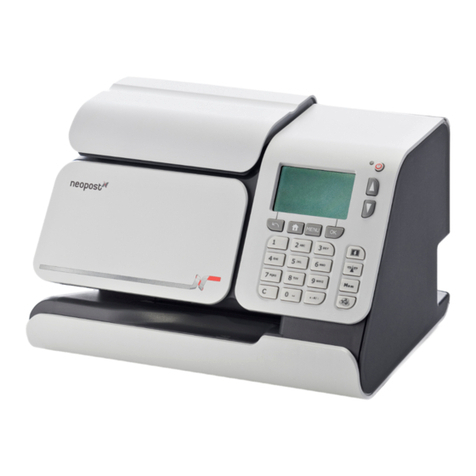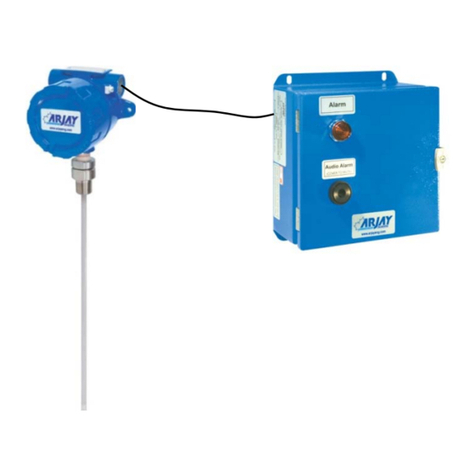RoboToolz RT-7690-2 User manual

RT-7690-2
Self-leveling, remote-controlled, simultaneous level and plumb
rotational laser system
User Guide
Toolz
404 Villa Street
Mountain View, CA 94041
(800) 984-0404 Domestic Revision 1
(650) 903-4944 International July, 2002
www.robotoolz.com 080-0020-01

Contents
User Safety.....................................................................................................................1
Warning Labels......................................................................................................................... 1
FCC Statement .......................................................................................................................... 1
Overview ........................................................................................................................2
RT-7690-2 Features................................................................................................................... 2
Accessories................................................................................................................................ 2
RT-7690-2 Components.................................................................................................3
Operation .......................................................................................................................4
RT-7690-2 Controls .................................................................................................................. 4
Turning on the Laser System ....................................................................................................6
Using the Lasers........................................................................................................................ 6
Operating Modes....................................................................................................................... 7
Out of Level .............................................................................................................................. 8
Laser Detector........................................................................................................................... 8
Using the Reflective Target..................................................................................................... 11
Using the Laser Enhancement Glasses.................................................................................... 11
Applications.................................................................................................................12
Level........................................................................................................................................ 12
Plumb ...................................................................................................................................... 13
Align........................................................................................................................................ 14
Grade....................................................................................................................................... 15
Power ...........................................................................................................................16
Base Unit................................................................................................................................. 16
RF Remote/Laser Detector...................................................................................................... 17
Temperature Protection........................................................................................................... 18
Calibration....................................................................................................................19
Care and Maintenance.................................................................................................22
Warranty Information ..................................................................................................23
Specifications..............................................................................................................24

RT-7690-2 User Guide
1
User Safety
The RT-7690-2 self-leveling, simultaneous level and plumb rotational laser system is a Class IIIA
laser product. Observe the following precautions when using this device:
Always operate the unit according to the procedures in this user guide.
Avoid direct eye exposure to the laser beam.
Do not point the laser beam at another person’s face.
Turn off the power to the base unit before moving it, to avoid accidental laser exposure and to
protect and lock the pendulum.
Do not disassemble or attempt to service the unit (with the exception of calibration, as
described in the instructions provided). Repairs or service are to be done only by an
authorized service center.
Warning Labels
The following labels are attached to every RT-7690-2 unit. They should not be removed or
defaced.
This Danger label is located on the front of the unit. It identifies the RT-
7690-2 laser system as a device that emits laser radiation and requires
appropriate user safety precautions.
This symbol is shown next to every laser aperture on the product. Laser
radiation is emitted from both the level and plumb apertures.
FCC Statement
This product has been tested and found to comply with the limits for a Class B digital device,
pursuant to Part 15 of the FCC rules. These limits are designed to provide reasonable protection
against harmful interference in a residential installation. This equipment generates, uses, and can
radiate radio frequency energy and, if not installed and used in accordance with the instructions,
may cause harmful interference to radio communications. However, there is no guarantee that
interference will not occur in a particular installation. If this equipment does cause harmful
interference to radio or television reception, which can be determined by turning the equipment
off and on, the user is encouraged to try to correct the interference by one or more of the
following measures:
Reorient or relocate the receiving antenna.
Increase the separation between the equipment and receiver.
Connect the equipment into an outlet on a circuit different from that to which the receiver is
connected.
Consult the dealer or an experienced radio/TV technician for help.
This device complies with Part 15 of the FCC Rules. Operation is subject to the following
conditions:
1. This device may not cause harmful interference, and
2. This device must accept any interference received, including interference that may cause
undesired operation.
IMPORTANT: Changes or modifications to this product not authorized by Toolz could void the
FCC Certification and negate the user’s right to operate the product.
LASER RADIATION
AVOID DIRECT EYE EXPOSURE
635 nm 5mW max.
CLASS IIIA Laser Product
DANGER

RT-7690-2 User Guide
2
Overview
The RT-7690-2 is a two-beam, self-leveling, remote-controlled laser system. Its level and plumb
laser beams can be independently controlled from the base unit or RF remote control. A remote
control with built-in laser detector allows for laser beam detection under lighting conditions
where beam visibility is poor.
This guide describes the features and operation of the RT-7690-2 laser system. Important
warranty and safety information is also included.
RT-7690-2 Features
The RT-7690-2 laser system includes the following features:
Base Unit
Level and plumb laser beams, with independent and simultaneous operation
Level and plumb self-leveling range: ±6 degrees
Accuracy:
– Level: ±1/8 in. (3 mm) at 100 ft. (30m)
– Plumb: ±1/4 in. (6.4 mm) at 100 ft. (30m)
Level and plumb Spin mode
– Variable rotation speeds (350, 600, and 1200 rpm)
– Plumb alignment: ±2.0 degrees
Level and plumb Line Dither/Scan mode, for higher beam visibility
– Six line lengths
– 360° level and plumb positioning
End-user calibration
Pendulum lock mechanism, for protection during transport and storage
Out-of-level indicator
Automatic power standby, with override
Low battery indicator
Built-in tripod mount – 5/8" x 11", for standard surveyor’s tripods,
such as the RoboToolz RT-A1150
RF Remote Control/Laser Detector
RF remote control range 300 ft. (90m)
Laser beam functions controllable from the base unit or RF remote control
Confirmation of last command sent
Laser beam locator, with fine/coarse resolution selection
Low battery indicator
Accessories
Rod bracket (for laser detector)
AC/DC power adapter (for base unit)
Laser enhancement glasses
Laser target

RT-7690-2 User Guide
3
RT-7690-2 Components
The following illustrations show the main components of the RT-7960-2 laser system base unit
and RF remote control/laser detector.
Base Unit (front)
Retractable
Antenna
Tripod Mount
Level Laser
Aperture Helmet
Plumb Laser
Aperture Helmet
Plumb Laser
Aperture
Level Laser
Aperture
Handle
Battery
Compartment
Base Unit (back)
Power Switch/
Pendulum Lock
Laser
Controls
Base Unit LED
AC/DC Port
Retractable
Antenna
Laser
Controls
LCD
Display
Detector
Panel
RF Remote Control/
Laser Detector
XY
X
Y
Calibration
Port
CA

RT-7690-2 User Guide
4
Operation
This section describes the operation of the RT-7690-2 base unit and its operating modes, and
explains how to use the laser detector.
RT-7690-2 Controls
Laser control functions are available from both the base unit and RF remote control/laser
detector. Refer to the following illustrations for the location of the operating controls.
RT-7690-2 Base Unit Controls
Level
Laser
Controls
Plumb
Laser
Controls
Level
Laser On/Off
Level
Clockwise/
Counterclockwise
Position
Line Dither/Scan
Plumb
Clockwise/
Counterclockwise
Position
Line Dither/Scan
Level
Line Dither/Scan
Mode
Plumb Alignment
Plumb
Line Dither/Scan
Mode
Level
Spin Mode/
Speed Select
Plumb
Spin Mode/
Speed Select
Plumb
Laser On/Off

RT-7690-2 User Guide
5
Level
Laser
Controls
Plumb
Laser
Controls
Level
Laser On/Off
LCD
Display
RT-7690-2 RF Remote Control/
Laser Detector Controls
Level
Clockwise/
Counterclockwise
Line Dither/Scan
Position
Plumb
Clockwise/
Counterclockwise
Line Dither/Scan
Position
Level
Line Dither/Scan
Mode
Plumb
Alignment
Plumb
Line Dither/Scan
Mode
Level
Spin Mode/
Speed Select
Plumb
Spin Mode/
Speed Select
Detector Coarse/Fine Select
Detector Beeper On/Off
Detector
Panel
RF Remote/Detector
Power On/Off
Plumb
Laser On/Off
RF Remote/Detector
Power On/Off
XY
X
Y
Note: The LCD display icons are described in the Laser Detector section.

RT-7690-2 User Guide
6
Turning on the Laser System
1. Place the RT-7690-2 base unit on a relatively flat surface, or set it on a standard surveyor’s
tripod, using the built-in 5/8" x 11" tripod mount on the bottom of the unit.
2. Turn on the unit with the power switch on the base unit. This switch also unlocks the
pendulum inside the unit so it can move freely, allowing the unit to self-level. The base unit
LED should flash green for approximately five seconds, then turn to a steady green,
indicating that the unit is on and functioning properly.
Notes:
1. Main power can be turned on only from the base unit.
2. None of the control buttons on the base unit or RF remote control work until the LED on
the base unit has stopped flashing and has turned to a steady green.
3. Turn on the level or plumb laser from the base unit or RF remote control .
Caution: Both lasers and the main power switch should always be turned off before
transporting or storing the base unit.
Using the Lasers
The RT-7690-2 laser system’s level and plumb lasers operate independently. You can turn on the
level laser, the plumb laser, or both lasers simultaneously.
Use the level Spin or Line Dither/Scan laser for indoor and outdoor plumb and alignment
applications, such as plumbing framing or aligning conduit.
Use the plumb Spin or Line Dither/Scan laser for indoor and outdoor level applications such
as leveling cabinetry, setting concrete forms, or leveling electrical outlets.
Simultaneous operation of the level and plumb laser beams generates a crosshair for level and
plumb alignment applications such as aligning cabinetry or tiling.
Note: See the Applications section for application illustrations.

RT-7690-2 User Guide
7
Operating Modes – Spin and Line/Dither Scan
The RT-7690-2 base unit has two basic operating modes:
Spin mode – The laser beam is dispersed throughout the level or plumb plane. Spin mode is
used under conditions where laser beam visibility is poor or nonexistent (for example,
outdoors in daylight). Spin mode produces a less visible laser beam, which can be detected
indoors or outdoors with the laser detector built into the RF remote control.
Line Dither/Scan mode – The laser beam moves rapidly back and forth (dithers), producing a
shorter, brighter beam than in Spin mode. With the brighter laser beam, the laser detector is
not required. The length of the line dither can be set easily to the requirements of the level
and plumb applications. Line Dither/Scan mode is normally used for indoor applications.
Note: The RT-7690-2 base unit can be controlled by the laser controls on both the base unit
and on the RF remote control. The RF remote control allows for non-directional, unobstructed
operation of the base unit from up to 300 ft. (90m) anywhere on the job site.
Spin mode
When the laser is first turned on , it is in Spin mode at the slowest speed. Continue pressing
the level or plumb Spin button to cycle through the medium and fast speeds, then back to
slow speed. Decrease speed to improve laser beam visibility, especially for indoor applications.
A plumb alignment is available for the plumb laser in Spin mode, with a range of ±2.0°
around the center of rotation. The default position is the midpoint of the 4° adjustment range. The
base unit emits a constant beep is emitted if the adjustment limit is reached.
Note: To enter Spin mode from Line Dither/Scan mode, press the level or plumb
Spin button on the keypad.
Line Dither/Scan mode
When the laser is first turned on , it is in Spin mode. To enter Line Dither/Scan mode, press
the level or plumb Line Dither/Scan button on the keypad. A short, bright line appears.
Continue pressing the Line Dither/Scan button to cycle through the six different line lengths, then
back from the longest line to the shortest.
Note: The laser beam is less visible at longer line lengths. It may be necessary to use the laser
detector to accurately locate the beam.
A plumb alignment is available for the plumb laser in Line Dither/Scan mode, with a
range of ±2.0° around the center of rotation. The default position is the midpoint of the 4°
adjustment range. The base unit emits a constant beep is emitted if the adjustment limit is
reached.
The level and plumb Position buttons are used to move the line dither through a 360°
range in either the level or plumb plane. Pressing and holding the button increases the speed of
travel.
Out of Level
Out-of-level indicators alert the user if the base unit is not on a level surface or if it is out of self-
leveling range. When the unit is out of level, the following occurs:
The base unit LED flashes red once per second.

RT-7690-2 User Guide
8
The laser beam stops rotating (if in Spin mode) or dithering (if in Line Dither/Scan mode)
and flashes a laser dot in sync with the base unit LED.
The beeper on the base unit sounds in sync with the laser beam and base unit LED.
Note: If the laser beam is not turned on, an out-of-level condition will still be indicated by
flashing and beeps from the base unit.
Reposition the unit to ensure that it is within the self-leveling range of ±6 degrees. Once the unit
is within self-leveling range, the LED turns green and the laser beam stops flashing. The RT-
7690-2 base unit resumes the mode of the last signal sent to the base unit.
Note: The out-of-level indicator overrides all other indicators. If the laser system is in low
battery mode or in standby mode and the laser system becomes out of level, the out-of-level
indicator will override the low battery indicator or standby mode indicator.
Laser Detector
The detector allows accurate detection of the laser beam outdoors, or under other conditions when
the laser beam is difficult to see. The following diagram illustrates the detector LCD display
icons.
Detector LCD Display
Low Battery
Indicator
XY
Beeper On/Off
Level Line
Dither/Scan Mode
Level
Spin Mode/
Speed Select
Plumb
Spin Mode/
Speed Select
Fine Resolution
Coarse
Resolution
Plumb Line
Dither/Scan Mode
Detector
Laser Beam
Locator

RT-7690-2 User Guide
9
To use the detector:
1. Activate the RF Remote/Detector with the keypad RF Remote/Detector Power On/Off button
. You will hear a single beep, and icons in the lower portion of the LCD will be displayed,
showing all available options. This confirms that the unit is activated, but the lasers and
detector have not been turned on. You can now turn on the lasers and the detector.
XY
RF Remote/Detector activated
2. Turn on the level and/or plumb laser and make any other selections desired from the
keypad. (See the Operating Modes section.). As soon as one or both of the lasers are turned
on, icons displayed will confirm the laser (level, plumb, or both) and mode (Spin or Line
Dither/Scan) selected. Both the level and plumb lasers start up in Spin mode, at the slowest
speed.
Y
X
Plumb laser, Spin mode, Detector Off Level laser, Spin mode, Detector Off
Note: The LCD display only shows the laser modes for commands transmitted to the laser
tool from the RF remote control. Any commands made from the base unit controls will not be
shown on the RF remote control/laser detector LCD.
Press the plumb or level Laser On/Off button again to switch to Line Dither/Scan mode.
Y
Plumb laser, Line Dither/Scan mode, Detector Off
X
Level laser, Line Dither/Scan mode, Detector Off

RT-7690-2 User Guide
10
3. To turn on the detector, press the Coarse/Fine select button . On startup, the laser detector
resolution is coarse, with the beeper on. The coarse resolution and beeper icons
are displayed on the LCD. Continue pressing the Coarse/Fine button to cycle through the
following options:
X
Beeper on, Detector on, Coarse resolution
Level Laser, Spin mode
X
Beeper off, Detector on, Coarse resolution
Level Laser, Spin mode
X
Beeper on, Detector on, Fine resolution
Level Laser, Spin mode
X
Beeper off, Detector on, Fine resolution
Level Laser, Spin mode
X

RT-7690-2 User Guide
11
Detector power off
Level Laser, Spin mode
4. Locate the laser beam, using the red sensor panel on the RF remote control/laser detector. As
the laser beam is approached, a single arrow points in the direction of the beam. Beeps from
the base unit help the user locate the laser beam:
Rapid beeping means the detector is pointed too high or too far to the left or right.
A continuous tone indicates that is pointed directly toward the laser beam.
A slow beep means the detector is pointed too low, or off center in the opposite direction.
5. Center the beam by moving the detector in the direction of the arrow. When the beam is
aligned with the center of the detector sensor panel, both arrows on the LCD display are lit
and the beep is continuous, indicating that it is properly centered.
Note: Detector orientation depends on whether the detector is being used to locate the
level or plumb laser beam.
Level laser detection Plumb laser detection
6. To turn off the RF remote control/laser detector, press the power on/off button . There is a
double beep for confirmation, the LCD screen becomes blank, and the lasers are shut off.
Using the Reflective Target
The red acrylic used in the targets enhances the laser, making the laser dot more visible.
Using the Laser Enhancement Glasses
The red plastic used in the glasses enhances the laser, making the laser dot more visible. These
glasses are particularly useful when using the RT-7690-2 laser system outdoors or in brightly-lit
environments.

RT-7690-2 User Guide
12
Applications
Level
Level (Carpentry) Level (Drop Ceiling)
Level (Framing) Level (Concrete)

RT-7690-2 User Guide
13
Plumb
Plumb (Carpentry) Plumb (Framing)
Plumb (Concrete)

RT-7690-2 User Guide
14
Align
Align (Carpentry) Align (Framing)
Align (Tiling) Align (Flooring)
Align (HVAC)

RT-7690-2 User Guide
15
Grade
Grade (Concrete)

RT-7690-2 User Guide
16
Power
Base Unit
The base unit can be powered by four “D” cell batteries (alkaline or non-alkaline) or by AC
power through a power adapter. Batteries cannot be recharged in the unit.
Low battery indicator
Low battery power is indicated by the base unit LED flashing yellow when 25 percent of battery
life remains (approximately five hours of use remaining). The LED flashes, and continues to flash
in a pattern of three seconds on/one second off, until the batteries are replaced or fail.
Battery replacement
The base unit battery compartment is located at the back of the unit, below the power switch and
AC/DC port. Open the compartment and replace the batteries, ensuring that the polarity is correct,
as shown in the diagram.
Caution: Remove all batteries from the RT-7690-2 base unit and RF remote control/laser
detector whenever the units are being stored for an extended period of time.
Power Standby mode
When no commands have been received for 25 minutes, the RT-7690-2 base unit automatically
enters Power Standby mode to save battery life. The base unit LED flashes green once per second
to indicate Power Standby mode. The timer is reset each time the user sends a command to the
base unit from the RF remote control or base unit, or if the laser detector is still in use.
To override Power Standby mode, press and hold the base unit Laser On/Off button for
three seconds. This overrides power standby for the base unit. The base unit emits a beep and
two “chirps,” confirming that automatic power standby is disabled. After automatic power
standby is disabled, the base unit will continue to operate for a maximum period of eight
hours.

RT-7690-2 User Guide
17
To re-enable automatic power standby, press and hold the Laser On/Off button again for three
seconds. The command is confirmed by another beep and one “chirp.”
When the base unit enters Power Standby mode, it “remembers” the settings that were in effect,
and returns to these settings when a command is issued and power comes back on. Current
settings are not retained when power is turned off with the base unit main power switch.
RF Remote Control/Laser Detector
The RF remote control/laser detector is powered by a 9V battery (alkaline or non-alkaline).
Low battery indicator
When RF remote control/laser detector battery capacity falls below 25 percent, an icon on the
detector LCD display indicates low battery power (approximately four hours of use remaining).
Battery replacement
The remote control/detector battery compartment is located at the back of the unit. Open the
compartment and replace the 9V battery, ensuring that the polarity is correct, as shown in the
diagram.
Caution: Remove all batteries from the RT-7690-2 base unit and RF remote control/laser
detector whenever the units are being stored for an extended period of time.
Power Standby mode
The RF remote control/laser detector enters Power Standby mode if none of the RF remote
control buttons are pressed or if the detector is not used for 20 minutes. The RF remote
control/laser detector timer is reset each time the user presses a button to operate the RF remote
control or the detector is used.
To override Power Standby mode, press and hold the Laser On/Off button on the RF
remote control/laser detector for three seconds. This overrides automatic power standby for
the RF remote control/laser detector. The RF remote control/laser detector emits a beep and
two “chirps,” confirming that automatic power standby is disabled. After automatic power

RT-7690-2 User Guide
18
standby is disabled, the RF remote control will continue to operate for a maximum period of
eight hours.
To re-enable automatic power standby, press and hold the Laser On/Off button again for
three seconds. The command is confirmed by a beep and one “chirp.”
Temperature Protection
The laser beam automatically shuts off when the temperature of the unit reaches 113°F (45°C).
The laser comes back on once the unit cools below 104°F (40°C). Current operating settings are
retained, and the RT-7690-2 base unit returns to the last functional mode selected.
Table of contents
Popular Measuring Instrument manuals by other brands
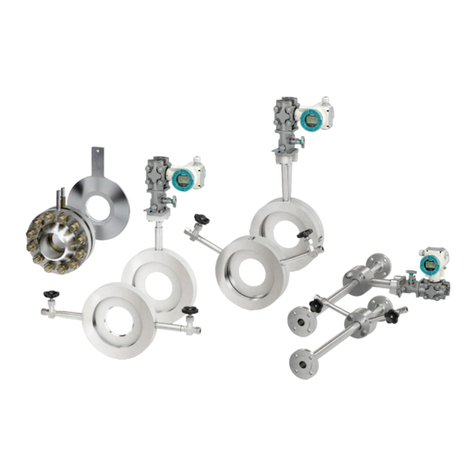
Siemens
Siemens SITRANS FP 7ME17.8 operating instructions

Endress+Hauser
Endress+Hauser prowirl 70 technical information
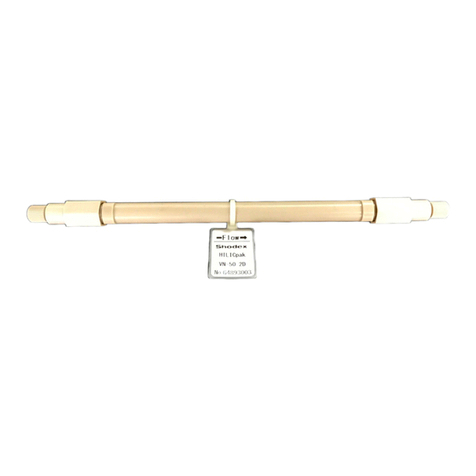
Shodex
Shodex HILICpak VN-50 10E Operation manual
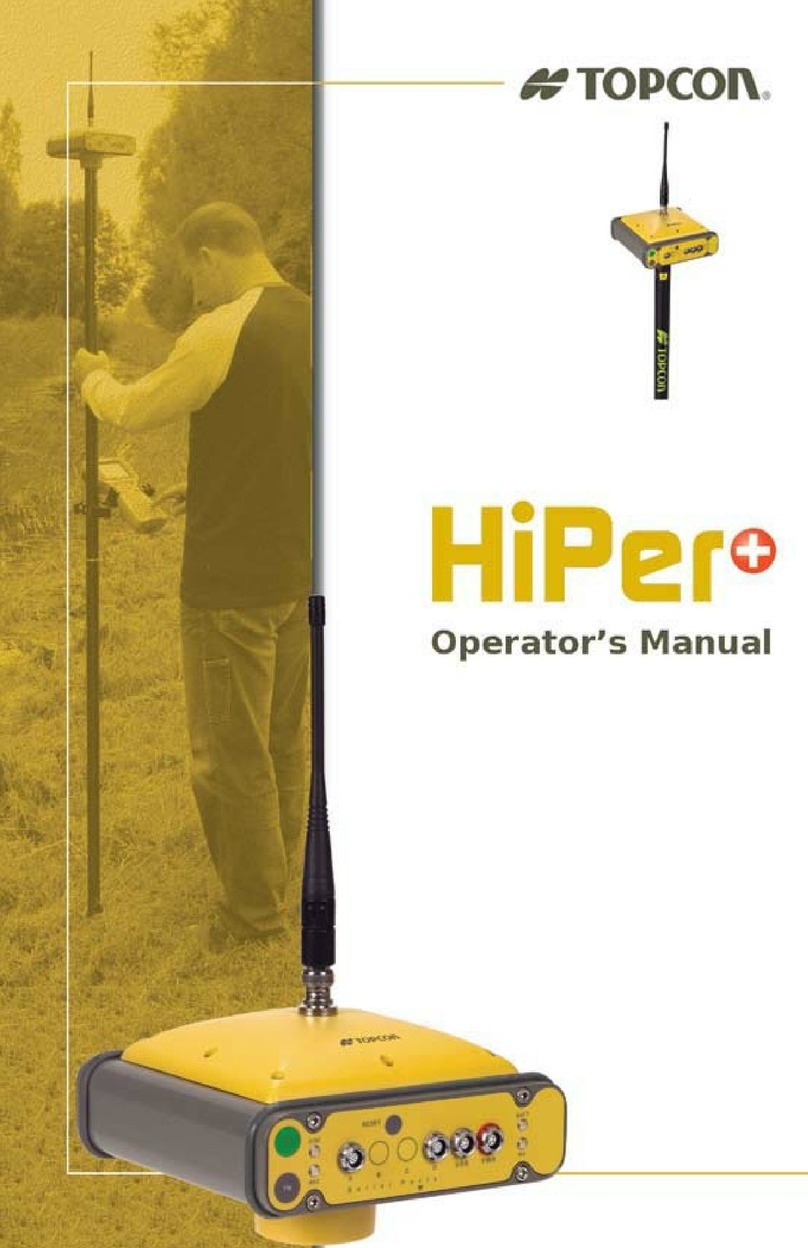
Topcon
Topcon HiPer Plus Operator's manual
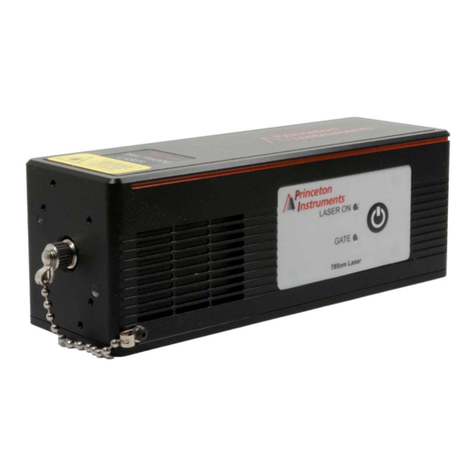
Teledyne
Teledyne Princeton Instruments FER785-MM user manual

Aeroqual
Aeroqual AQM 65 user guide



